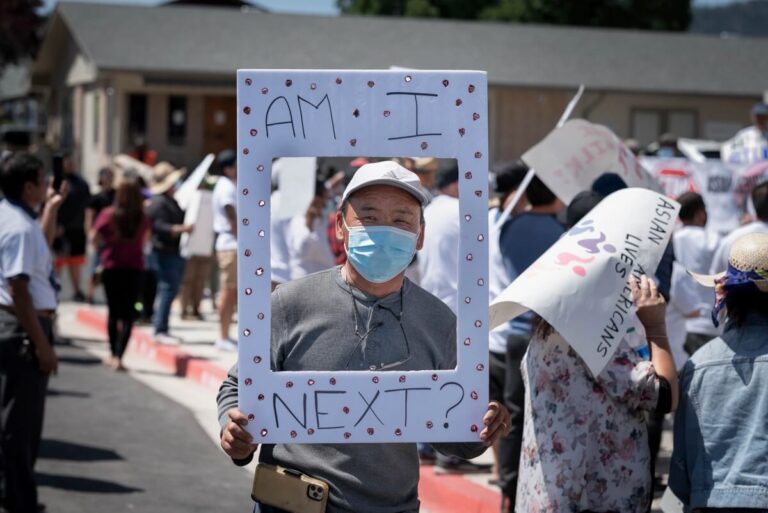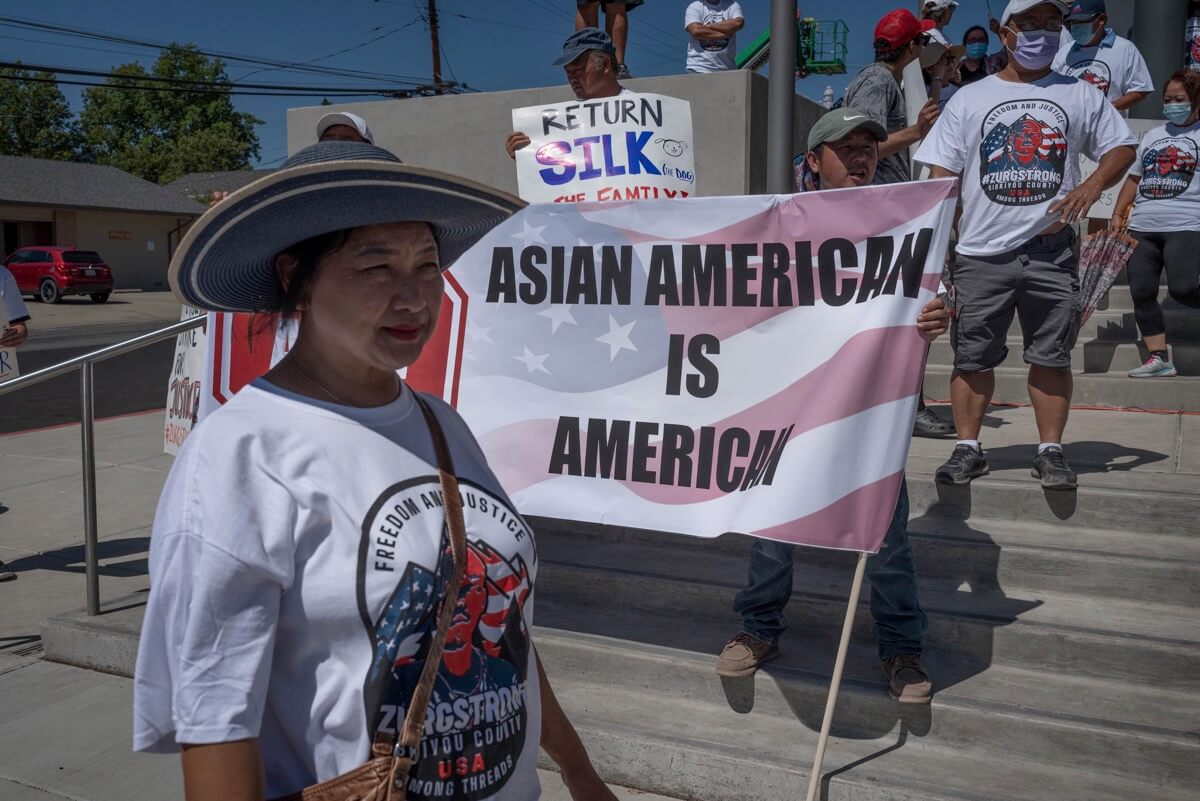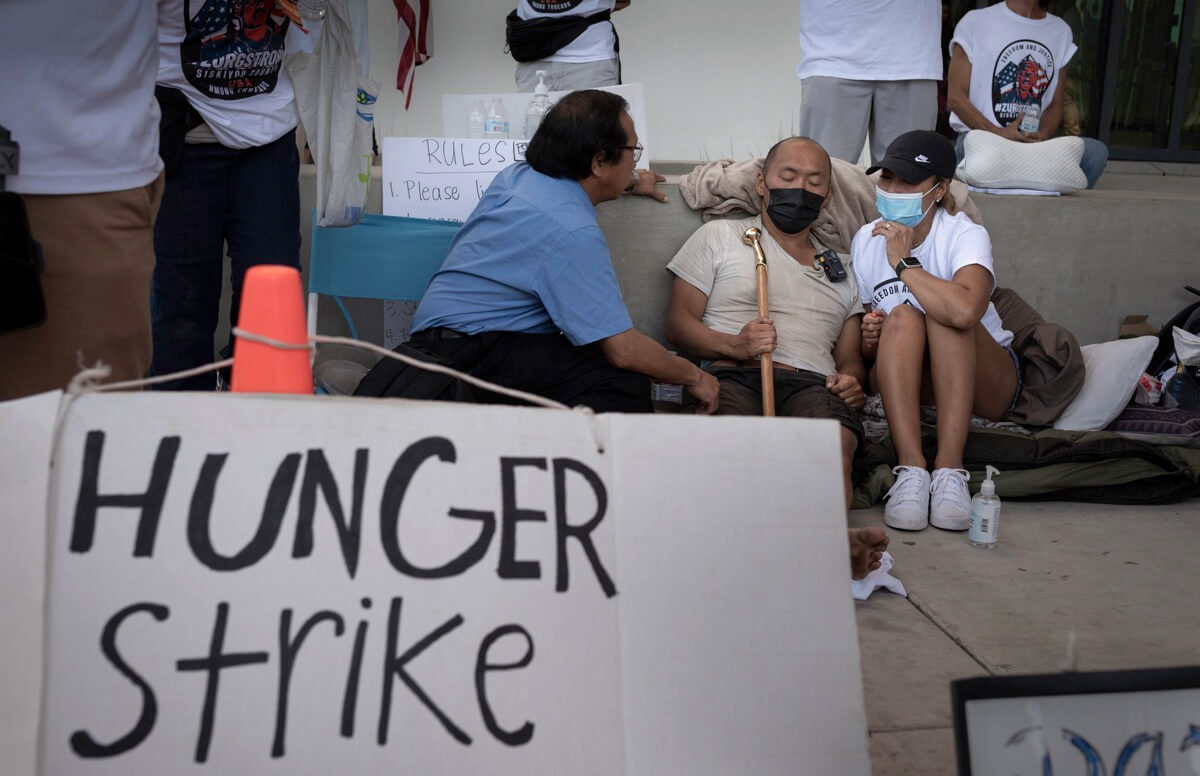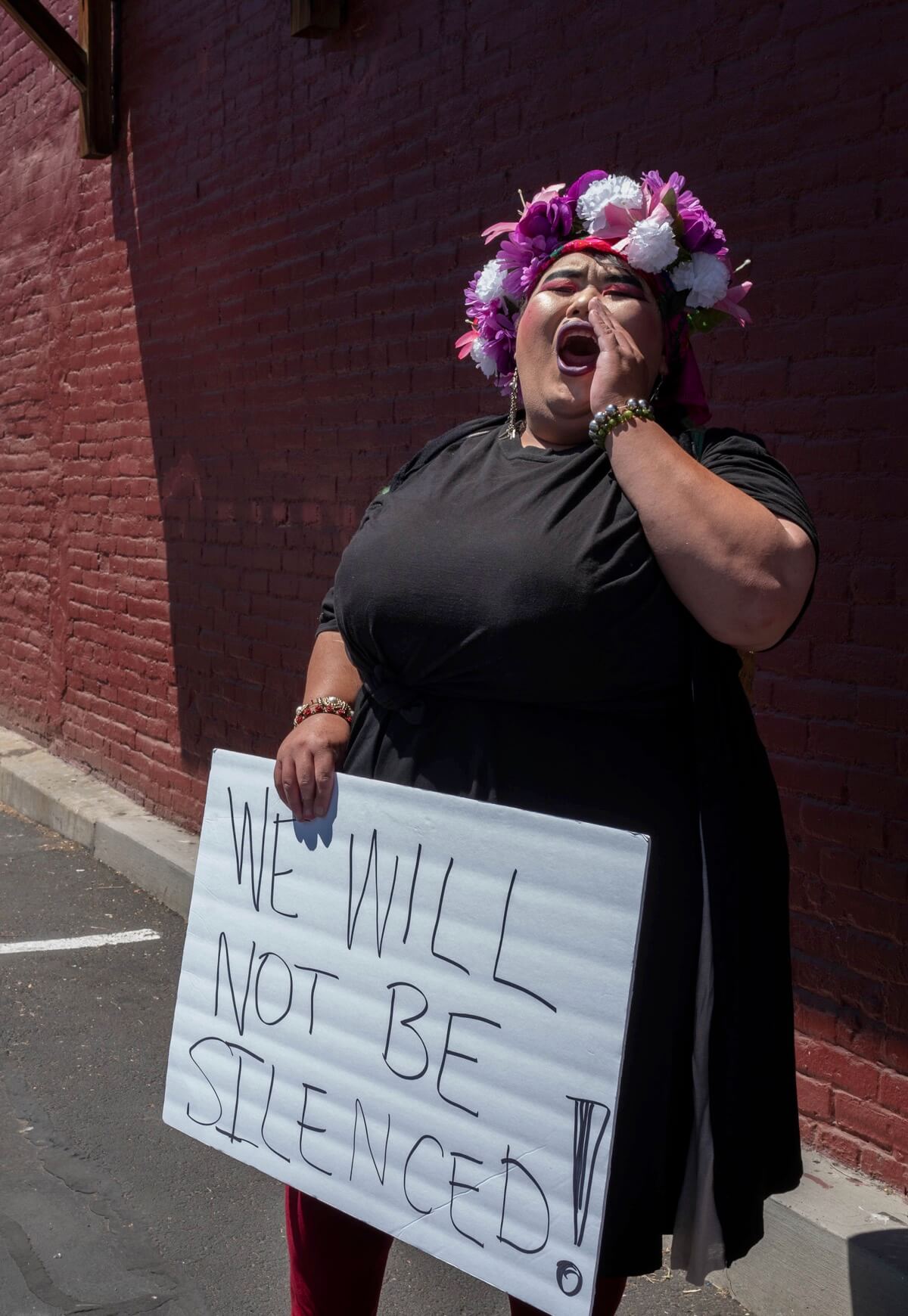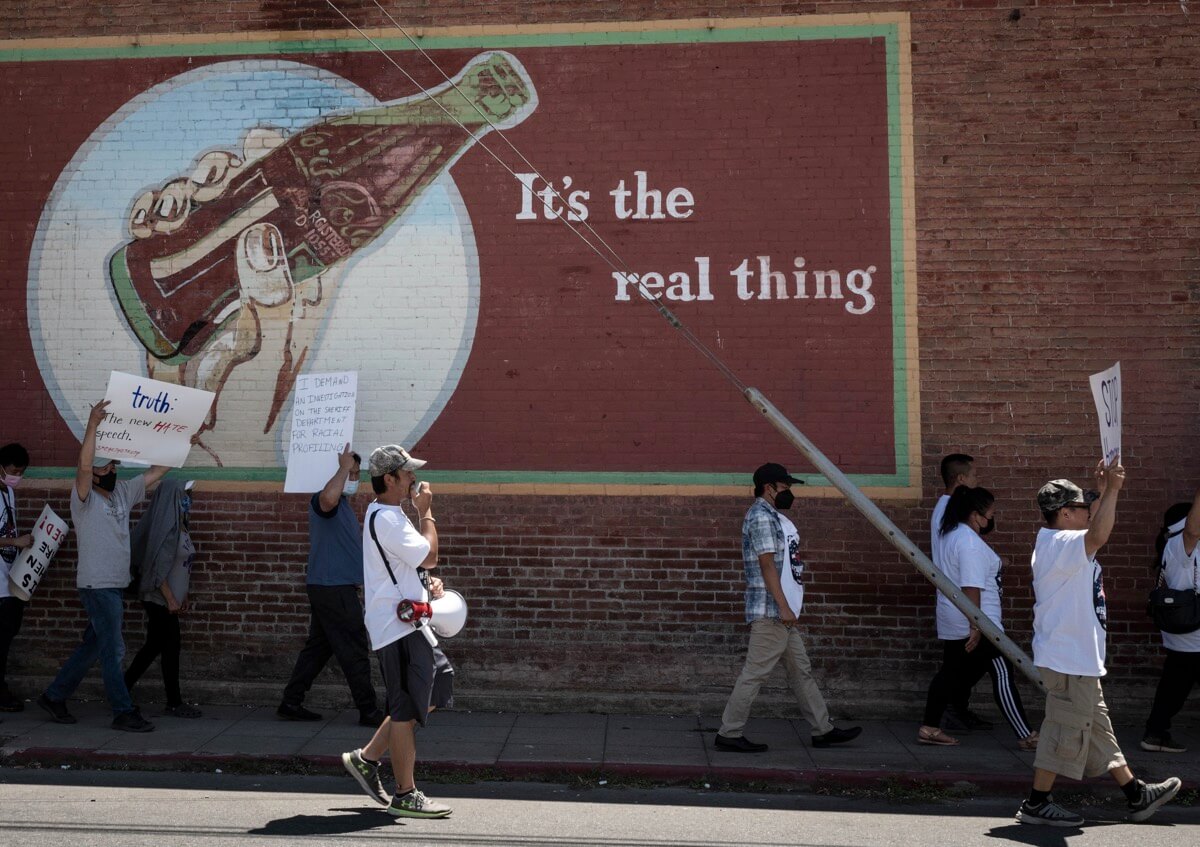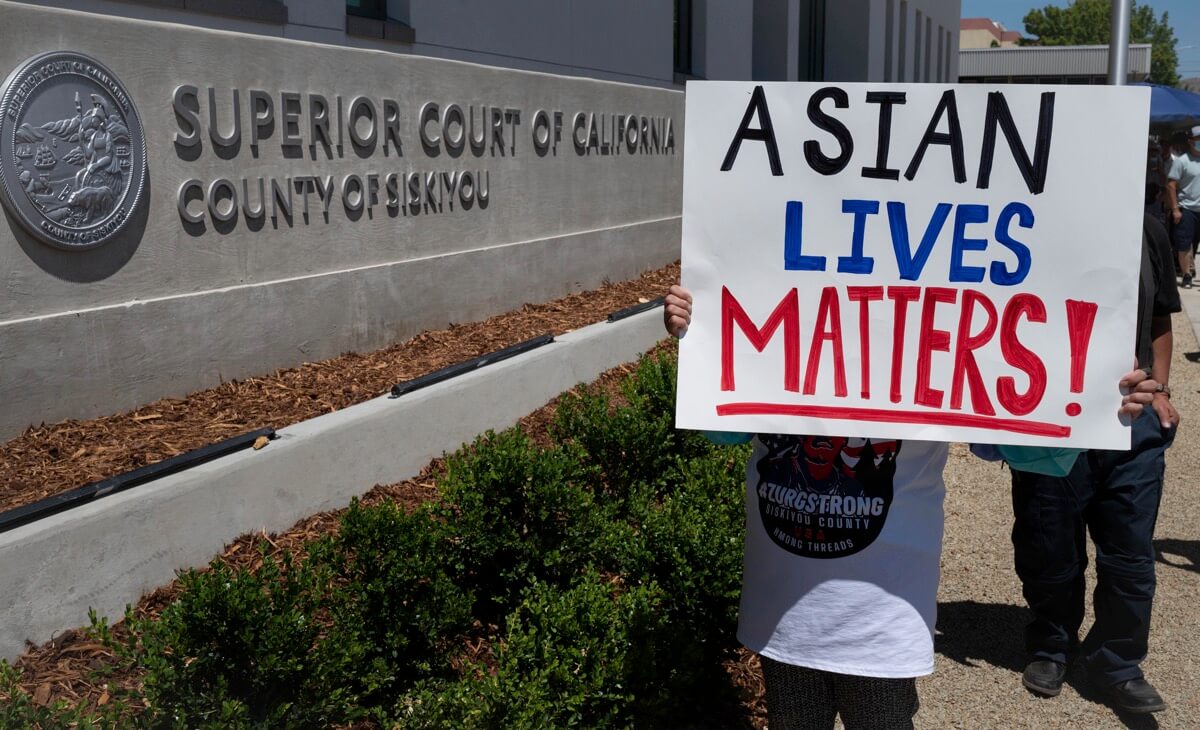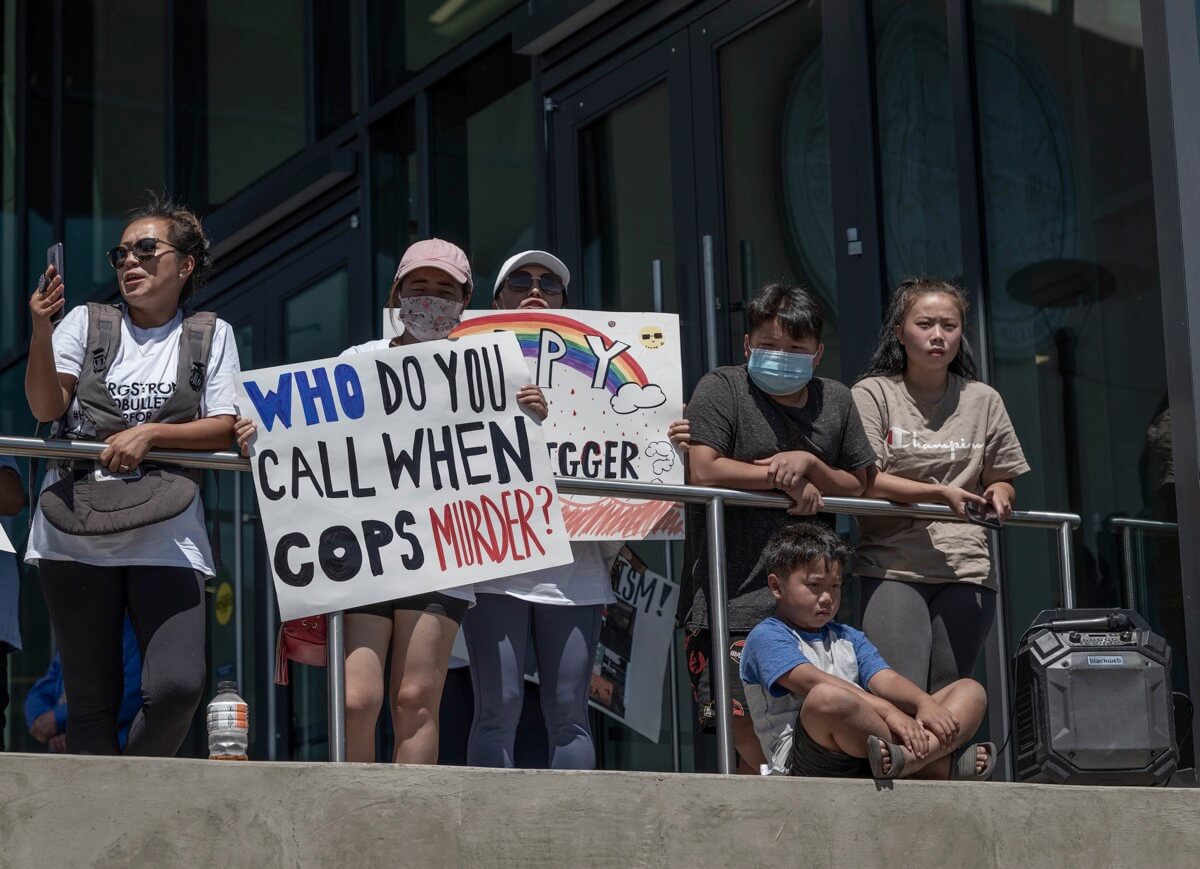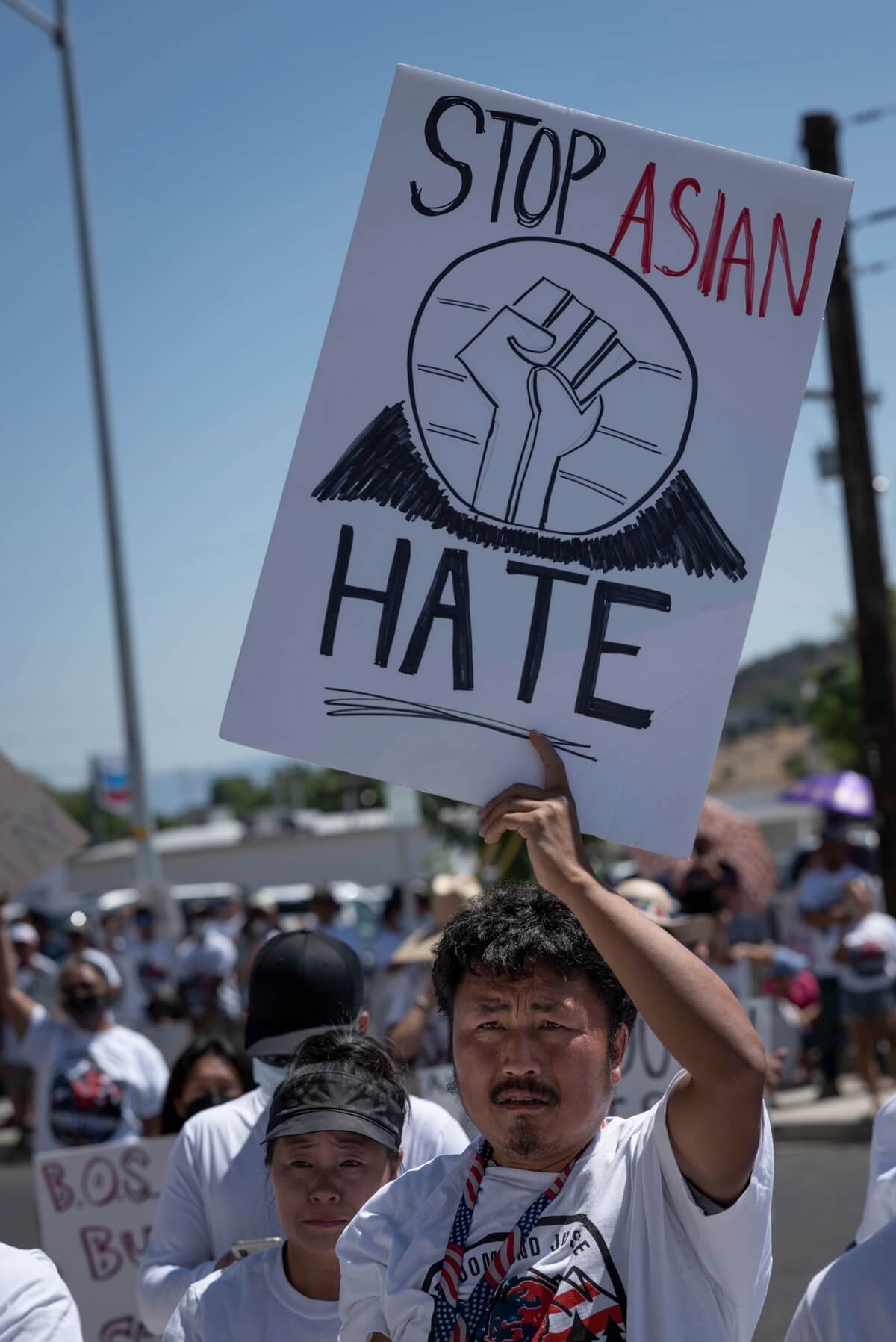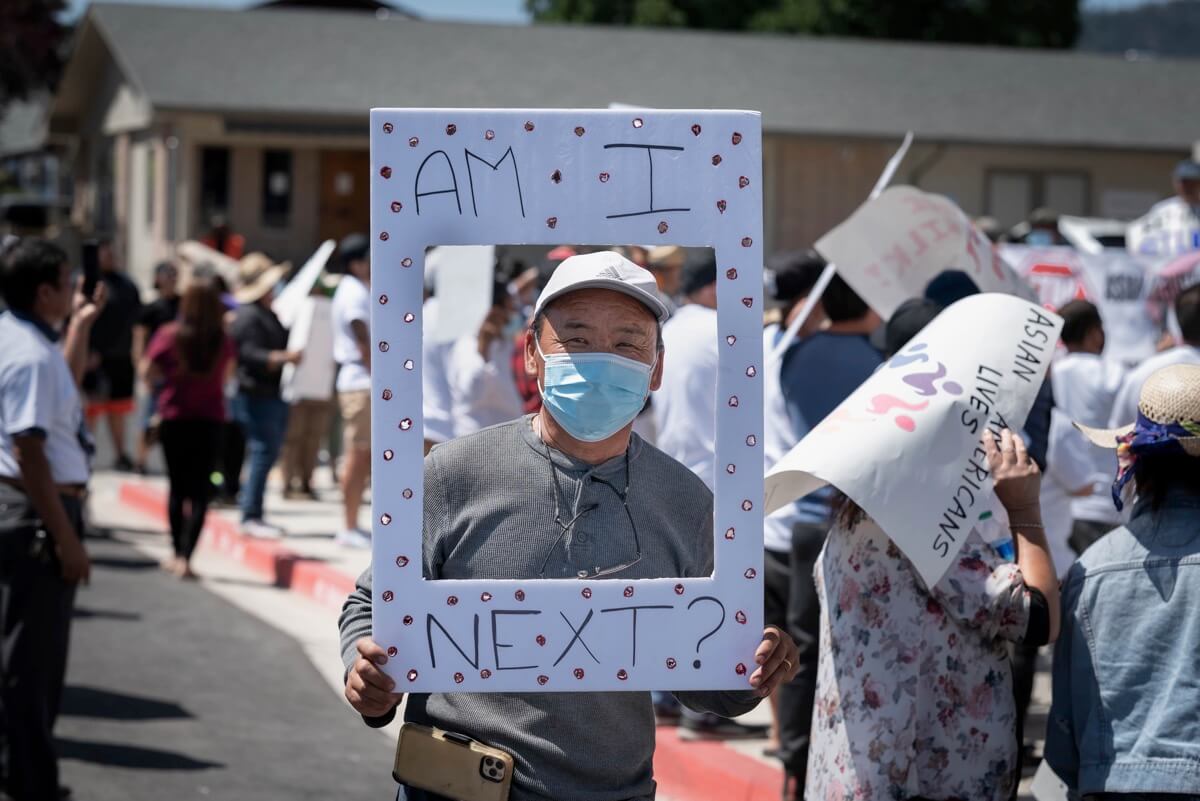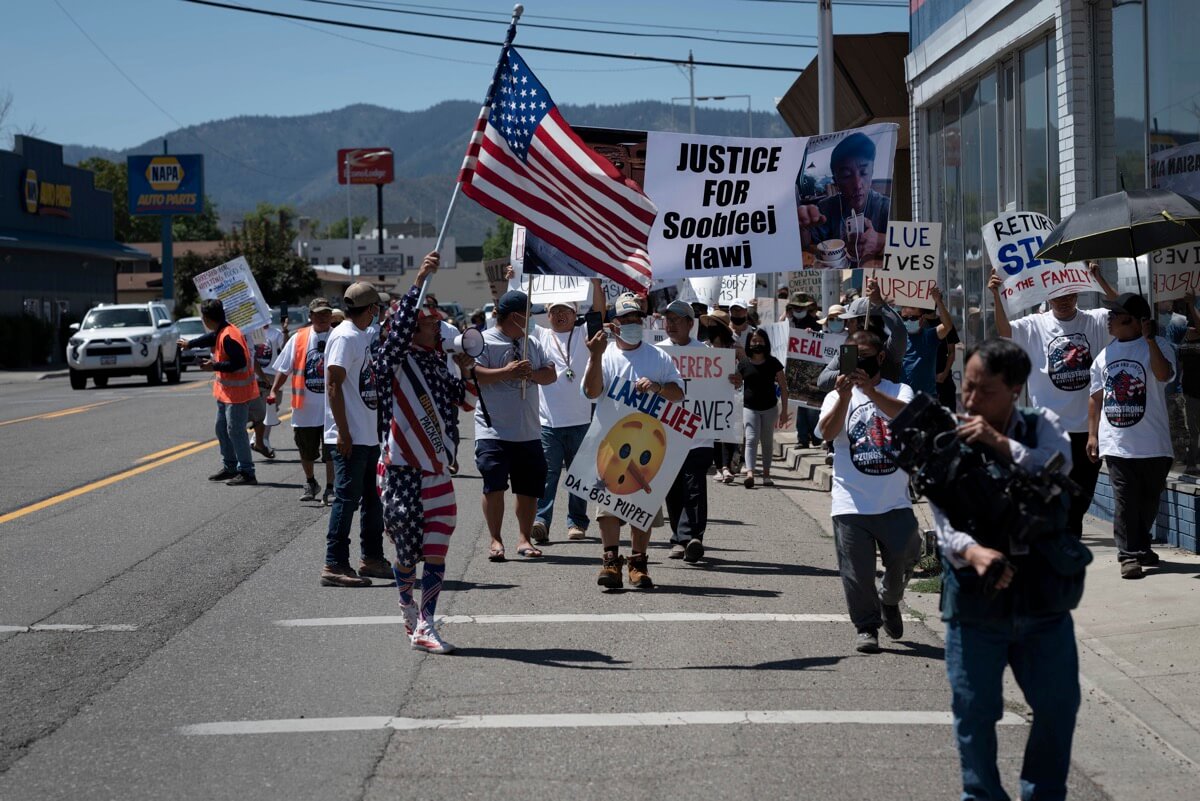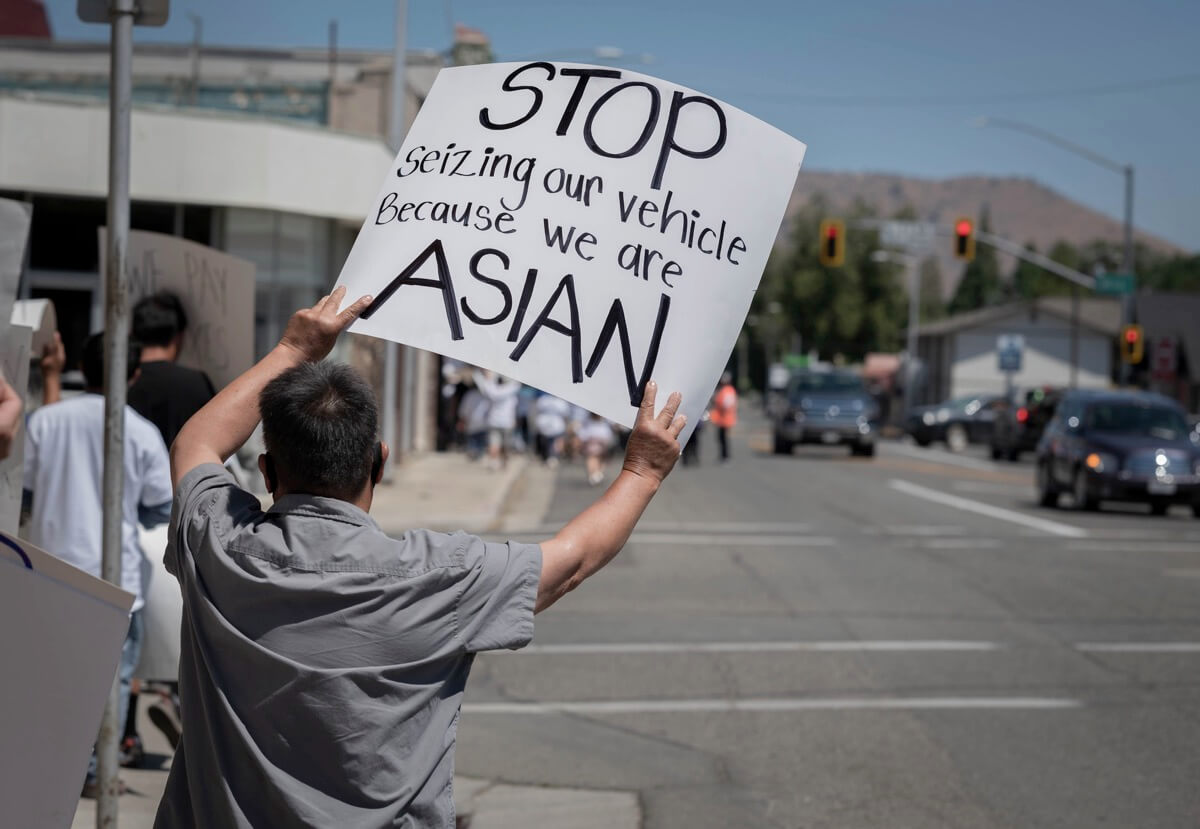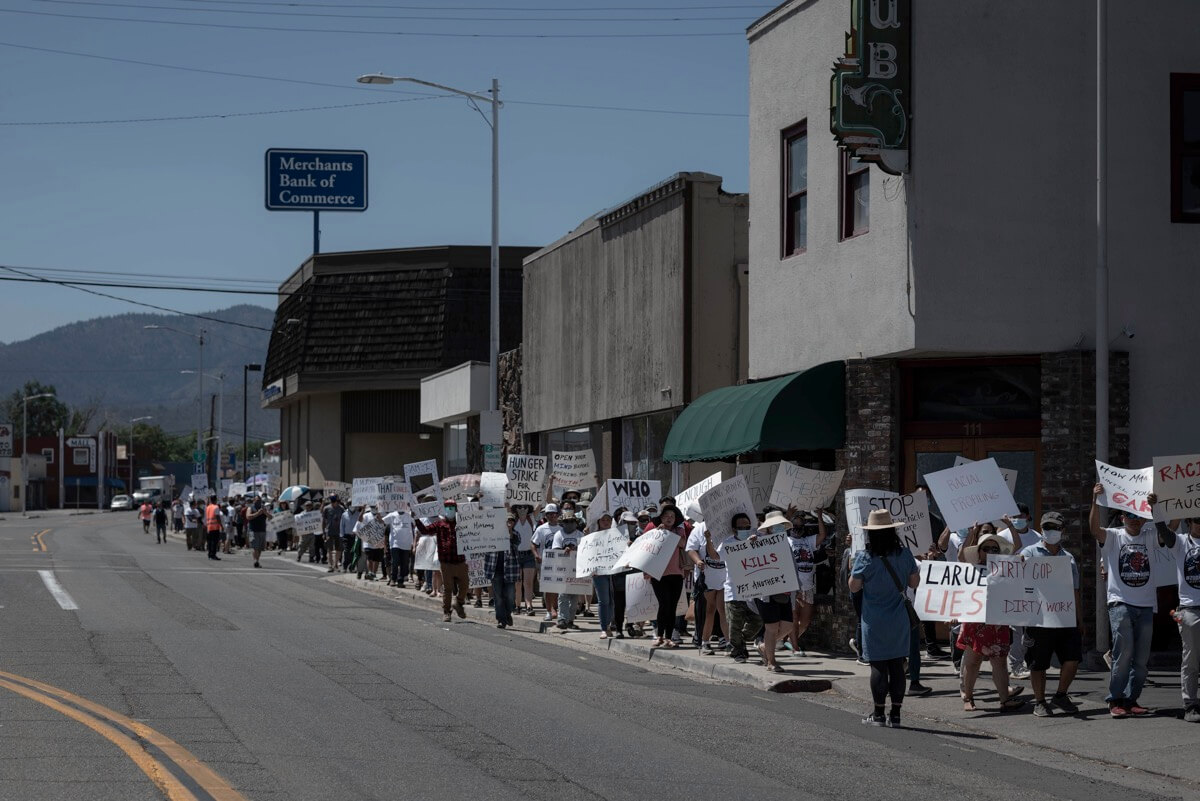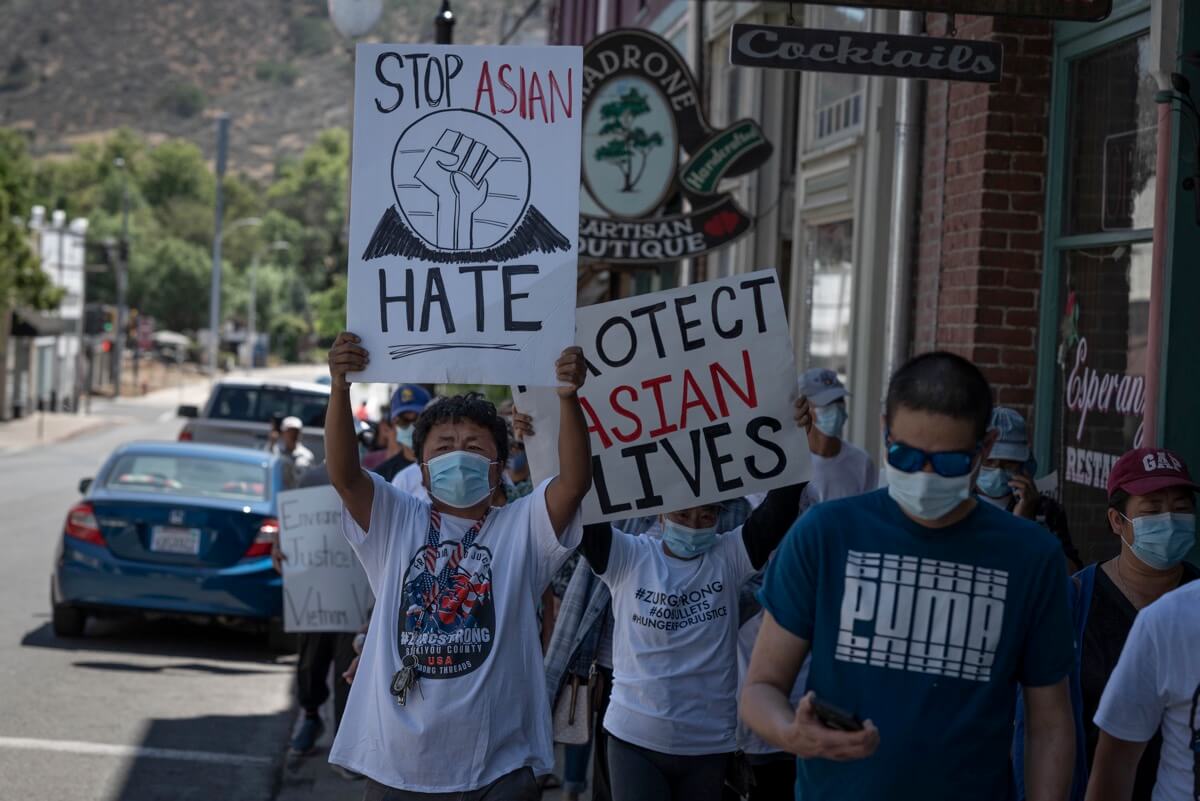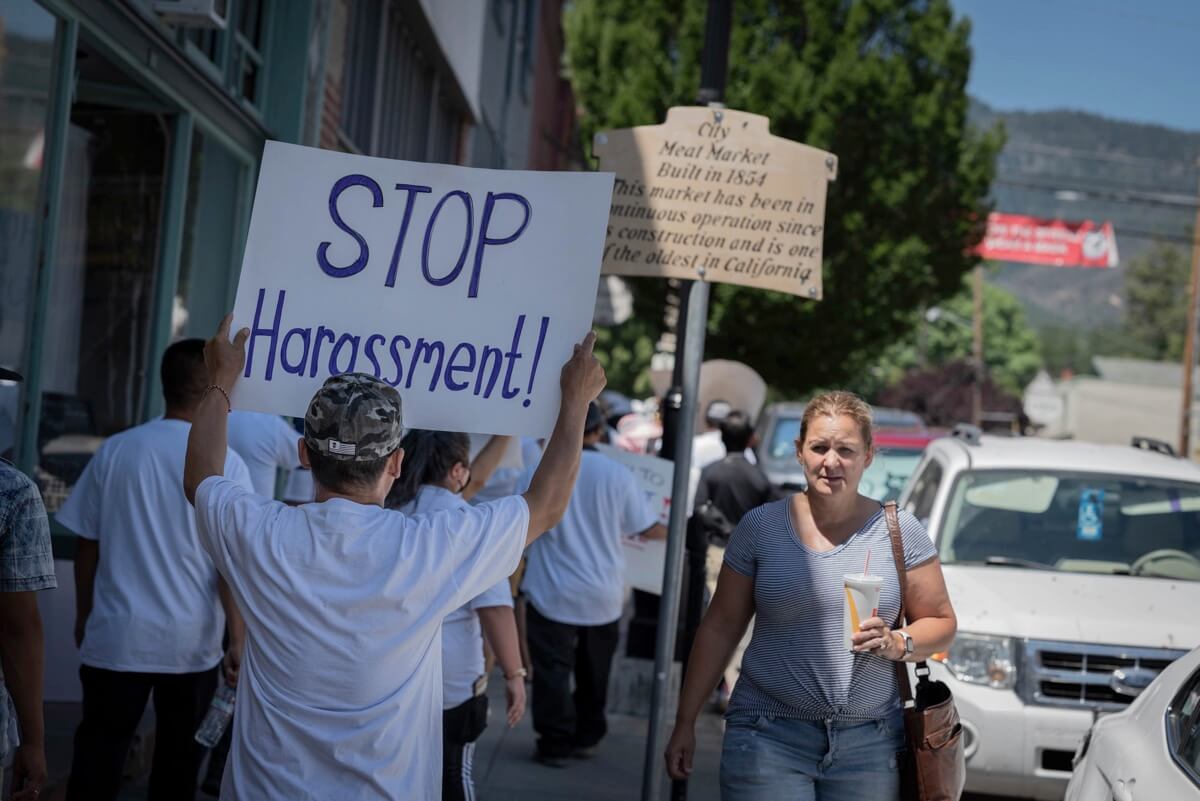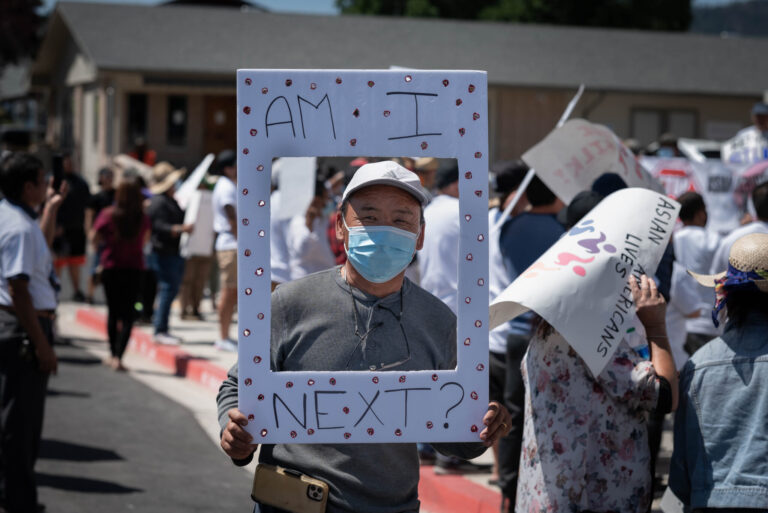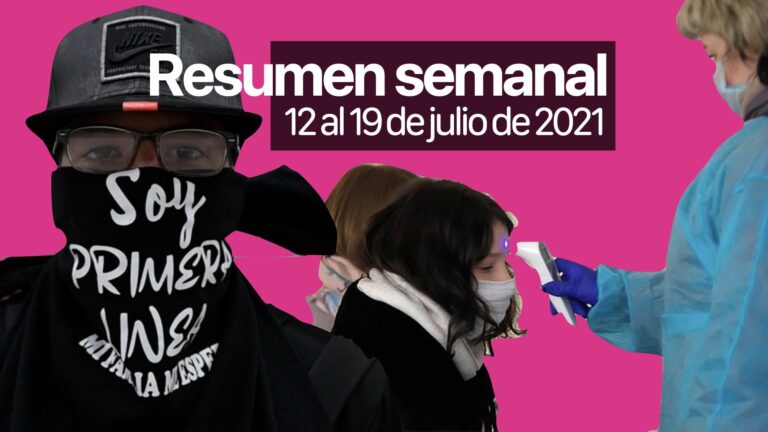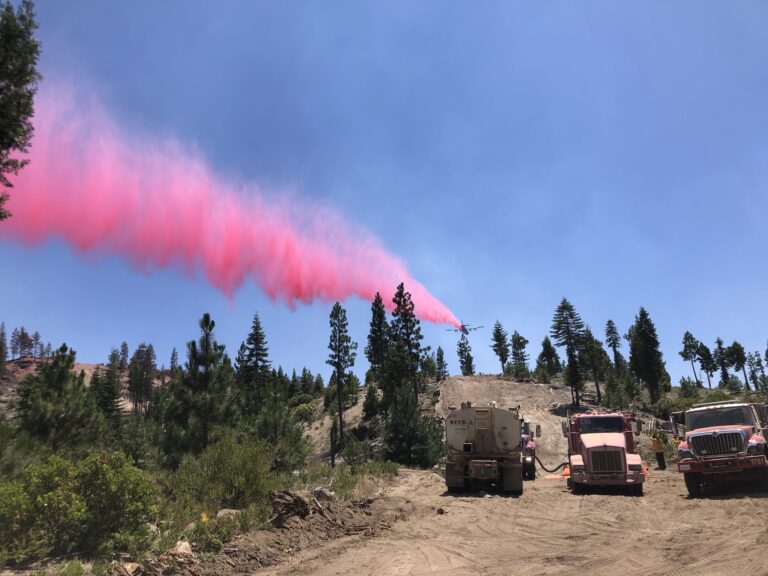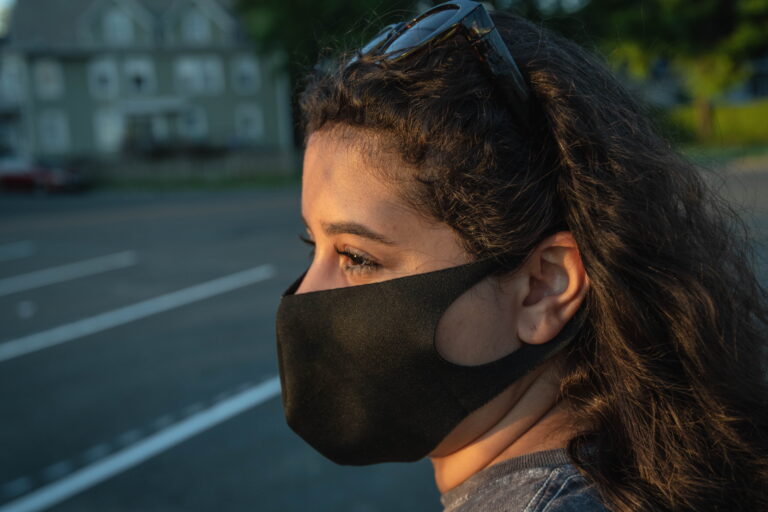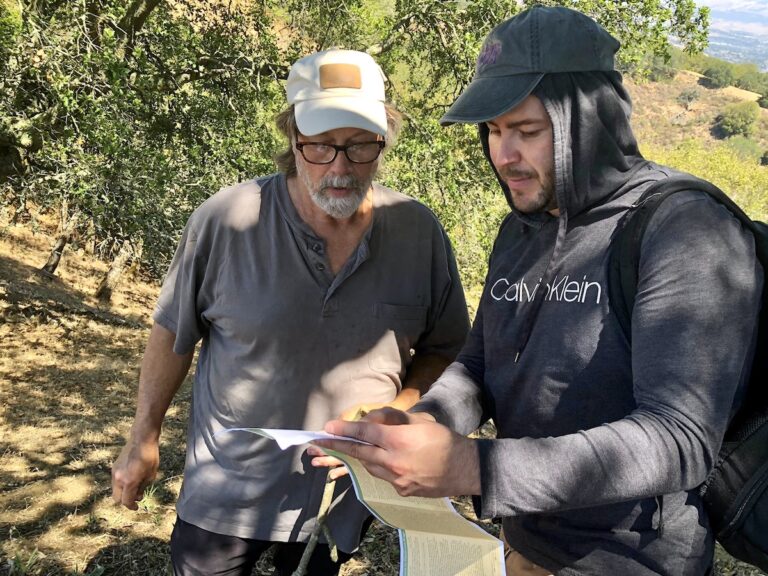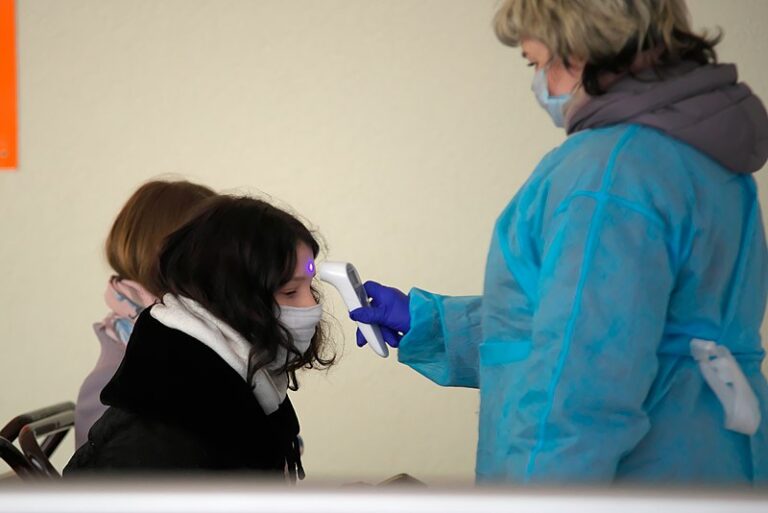Photos of Manuel Ortiz
Siskiyou County, the new frontier of resistance to anti-Asian violence
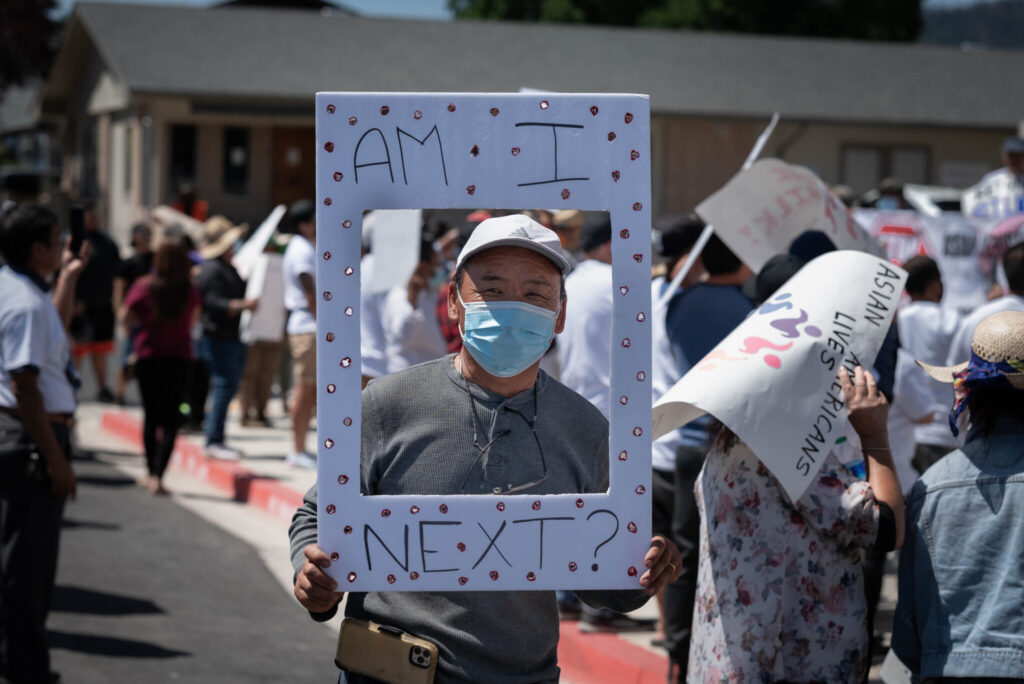
Sandy Close. Ethnic Media Services.
With additional information from Sunita Sohrabji.
Video and photographs by Manuel Ortiz. Peninsula 360 Press [P360P].
YREKA, California - More than 600 Hmong Americans from across California and as far away as Milwaukee and Minneapolis rallied Saturday at the Siskiyou County Courthouse in Yreka to demand a federal investigation into the June 28 fatal shooting of a Hmong father of three by law enforcement.
According to Mai Vang, a Sacramento councilmember who spoke at the July 17 rally, the protest has made this sparsely populated county in the foothills of Mount Shasta the new focus of Asian-American resistance to the rise of anti-Asian violence in the state.
In this case, the targets are Asian-Americans of Hmong, Cambodian, Laotian and Chinese descent who have settled in growing numbers in the county, many of them to grow small plots of cannabis in much the same way as their families did in Laos and Cambodia. The shooting intensified growing racial tensions between county authorities and cannabis growers. Although cannabis is legal in California, outdoor cultivation is prohibited in Siskiyou County. Growers are allowed to grow up to 12 plants indoors.
The shooting victim, identified as Soobleej Kaub Hawj, 35, allegedly turned the wrong way at a checkpoint on the A 12 near Weed during a mandatory evacuation order of the region in the early hours of the Lava fire. His wife and three children were in a second car behind him.
Law enforcement says he was turning back toward the evacuation zone when he was stopped, and that he was pointing a semi-automatic handgun.
Community activists differ, saying it was too dark to see inside the truck. A photo taken by an eyewitness shows the sides of the truck riddled with 21 bullet impacts and both side windows blown out. Activists also say an eyewitness video records the sound of at least 40 to 60 bullets being fired.
The Siskiyou County Sheriff's Department did not issue a formal statement, but posted a response on its Facebook page: "Officer-involved shootings are complex investigations that take time to thoroughly investigate. There are certain details surrounding this incident that have not been made public as the investigation is ongoing; however, a comprehensive incident report will be made public in the future once the investigation is complete."
Zurg Xiong - a 33-year-old local activist who began a hunger strike on July 9 to demand justice for Hawj - was at the center of the July 17 rally. In a letter to Siskiyou Sheriff Jeremiah LaRue and the Siskiyou County Board of Supervisors, which was circulated among the protesters, Zurg reiterated his demands: the release of all video camera footage, an official investigation into the shooting, and an end to racial discrimination against the Hmong community, including restrictive water regulations that activists say target Hmong farmers.
Surrounded by family members keeping a constant vigil, Zurg told the protesters that he was prepared to die if justice was not served.
Many elderly protesters, including Vietnam War veterans dressed in military fatigues, expressed a sense of betrayal at the county authorities' characterization of Hmong farmers as the "Hmong Cartel."
"Why do they hate the Hmong?" asked Dr. Lee Yao Pang of Sacramento, who was referring, like many at the protest, to the volley of bullets fired at Hawj's car.
"We served US forces in the secret war in Laos, rescued US pilots, lost over 35,000 lives supporting the U.S. Now we are accused of running a secret war on drugs here."
"What would a cartel be doing calling for dialogue and peacefully protesting like this?" asked Ed Szendrey, former chief investigator for the Butte County prosecutor's office, who has helped secret war veterans since the 1990s and came to the protest from Chico. He said the county's water regulations were so restrictive that they were driving Hmong farmers out of the county.
"It's as if they assume that every drop of water goes to cannabis cultivation, but people need water for cooking, for bathing, for living. Old couples now have to go to the stream for water.
Six Asian Americans filed a lawsuit on June 4, 24 days before Hawj was killed, seeking a temporary restraining order barring the Sheriff's Office from monitoring water delivery trucks in the Mount Shasta Vista area, where Hmongs make up the majority of residents. The plaintiffs claimed their water rights were violated in an ill-conceived plan to curtail marijuana cultivation. Read the lawsuit here: https://ecf.caed.uscourts.gov/doc1/033112450266
In their answer to the complaint, the defendants noted that thousands of pounds of illegally grown marijuana, with a street value of between $59 million and $179 million, had been seized in the area: https://ecf.caed.uscourts.gov/doc1/033112458714
The county regulation also prohibits pipes carrying more than 100 gallons of water, which activists say leads to racial discrimination against any Hmong who drive a truck with water. "People don't just lose their water, they lose their trucks," Szendrey said, "Alfalfa and wheat farmers use infinitely more water, and they're not stopped or questioned about their water use."
The water restrictions are on certain roads that cover much of the Hmong community, he said. "Even if it's not explicitly stated, this makes it a racist issue. There is a strong social group that wants to drive the Hmong out."
Szendery and other supporters of the Hmong community are calling for a Justice Department investigation into the Hawj shooting.
Mary Ly, a 20-year-old wife and mother of two, moved to Siskiyou from Denver last year to care for her mother. Since the water ordinances were passed, she said, she has experienced increasing animosity directed at herself and anyone who looks Hmong.
"After the regulations were passed, cars followed me home. People would take my picture and bother me. I'm a young Asian American girl, what if this happened to my mother? I'm scared of my mother going to the grocery store." Ly works in retail and says she sees how clerks disrespect Hmong elders. "I've never experienced racism like this before," she says.
Amid chants of "Shi lou, Shi pa" - love one another, help one another - speakers and protesters stressed that, in addition to seeking justice for an unexplained death, their goal was to seek dialogue with the authorities.
"We want to show the sheriff that we are strong and we have a voice," said Peter Thao, one of the organizers of the event. "We want to make sure the investigation moves forward and that they release the images of the body. But here's an opportunity to get to know each other and open a dialogue, and if law enforcement needs to be taught our culture, we're open to that."
John Thoa and his wife run a nonprofit for seniors in Fresno and have made the trip to Yreka because "this is a dialogue we need to have - among all our Asian groups - to express our concerns about what's going on here."
Nhoua Xiong, a Chico State student who grew up in Milwaukee, was inspired to join the protest by Martin Luther King, Jr.'s call that "injustice anywhere is injustice everywhere."
We have put aside tribal issues - we have 18 clans - and we are learning, after only 50 years of being in America, what it means to be an American: "to have the right to disagree.
But the optimism and call for dialogue is tempered by despair at the daily cruelty the Hmong say they experience. Among the demands in Zurg Xiong's letter to the sheriff and the Board of Supervisors is that Hawj's dog, Silk, who was also shot, be immediately released to the family. Silk was picked up by law enforcement officers the night of the shooting and will reportedly be "adopted."
Casa Círculo Cultural, even closer to the community
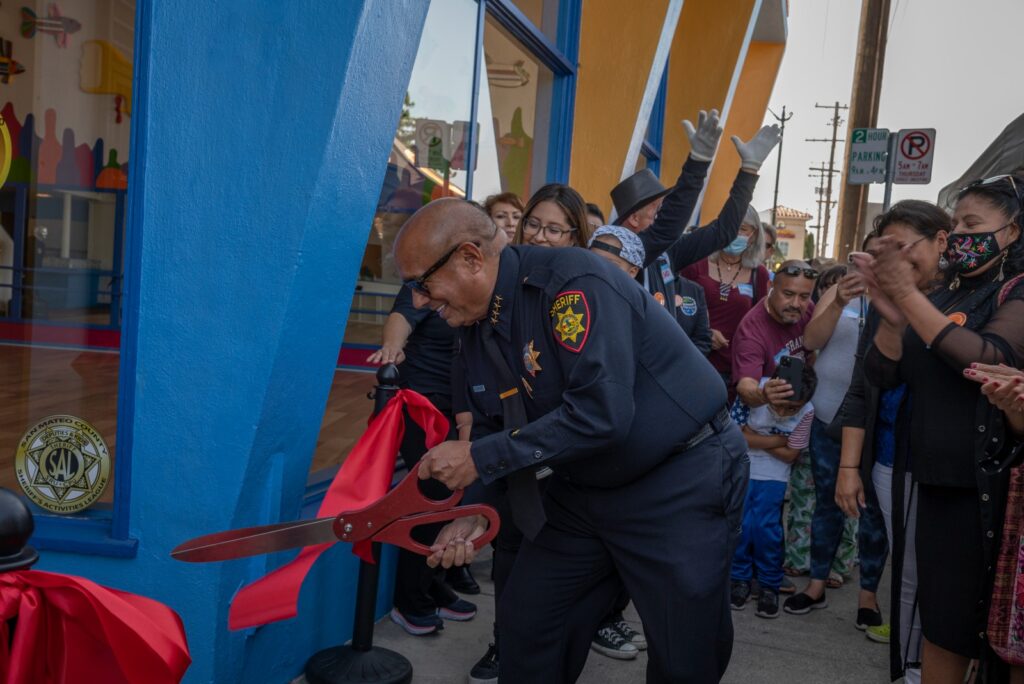
By Pamela Cruz. Peninsula 360 Press [P360]
Casa Círculo Cultural (CCC) took a big leap forward and is now even closer to the community it has served for over 12 years in San Mateo County.
On Wednesday, July 14, amidst applause, Mariachi music and cheers, CCC opened its new facility in the heart of North Fair Oaks at 3090 Middlefield Rd. in Redwood City, CA. 94063.
Casa Círculo Cultural is a community organization that, through art and culture, painstakingly provides tools for a better life to families in San Mateo County's most disadvantaged communities, including Redwood City, North Fair Oaks, Belle Haven and East Palo Alto.
San Mateo County Sheriff Carlos G. Bolaños cut the ribbon during the inauguration of the new headquarters.
"We are proud to serve the community that lives and works in these areas by offering cultural programs and working closely with volunteers, community leaders and experts," said Sheriff Bolaños.
For her part, the Consul of Mexico in San Francisco, Remedios Gomez Arnau, one of the great guests at the ceremony, noted that CCC has become the center of the Mexican community in San Mateo County.
"It is not only a house where you can find educational, cultural and artistic programs; it is very important because the community can be educated and feel comfortable learning new things, but above all, where Mexican culture is preserved," said Gomez Arnau.
"It is important as Mexicans living abroad, not to forget our roots and our origins, and the way not to do that is to continue learning about our culture, whether through cooking, dancing, music or art. That is going to enrich us, and it is very important that we can pass it on to our children so that they feel very sure of themselves and the identity they have," she said.

East Palo Alto Mayor Carlos Romero said that venues like CCC are very important because they complement formal education, which often does not delve deeply into cultural issues.
"This venue, to me, is almost sacred, in the sense that there are few places where people can come to see artwork, to see art, to work in the arts and dance. To have this community resource in Redwood City is fabulous, I wish someday we could have some of the CCC events in East Palo Alto to try to spread Latino culture and culture in general," she said.
CCC offers multiple bilingual programs, including technology, martial arts, cultural arts, youth and women's empowerment.
Importantly, CCC will expand its service to the community by sharing its programs with community organizations such as CARON Community Partnership and Sheriff's Activities League.
Diane Howard, Mayor of Redwood City, applauded the new facility's location in the heart of the community and close proximity to public transportation, and said she was happy for the community CCC will serve, as the accessibility will allow it to reach more children and youth.
Redwood City Vice Mayor Giselle Hale highlighted the importance of the location of CCC's new headquarters, noting that the new facility is very accessible to the public, which helps people get involved in the project and new cultural endeavors.
In addition to those mentioned, happy Bay Area personalities such as businesswoman Florence Fang; Parks and Recreation Department Director Chris Beth; as well as Redwood City Councilmembers Alicia Aguirre, Michael Smith and Jeff Gee, a member of the CCC Board of Directors along with Christina Corpus, Connie Guerrero, Adam Alberti, Chris Blom; as well as the CCC Executive Board attended the event.
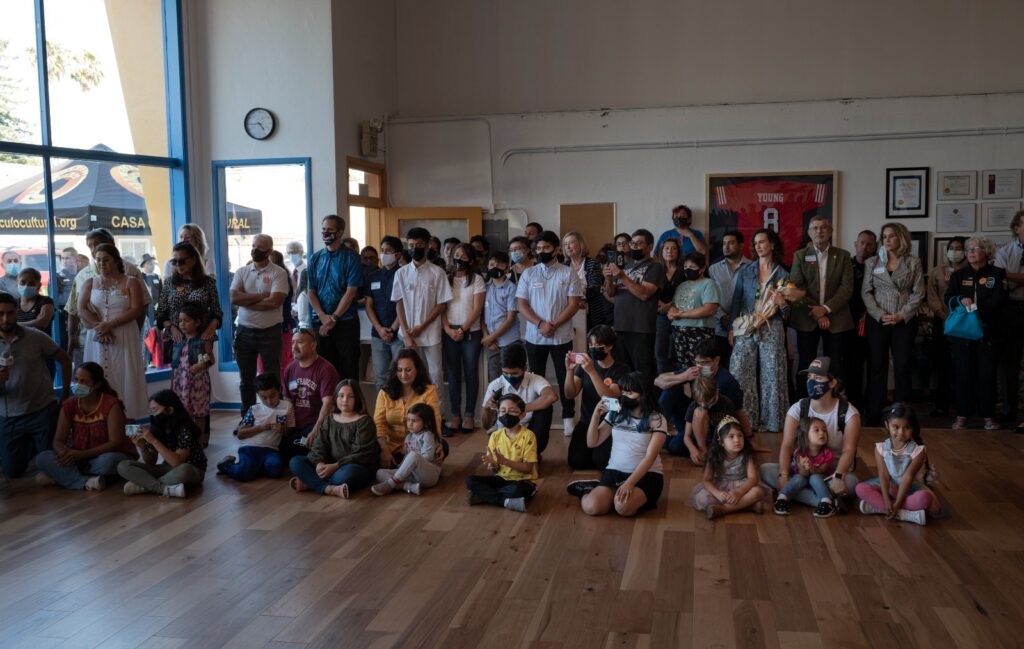
Some highlights of activities at Casa Círculo Cultural include:
● Technology Lab. With school modules and extracurricular technology and communication activities that provide educational support to low-income and underserved families to help them achieve academic success, especially during distance learning due to COVID-19.
● Economics and Business Program, which organizes an annual children's fair, where students learn the principles of a business plan, including marketing, product development and sales.
● Social and cultural initiative, which promotes personal and community enrichment through art, theater, music, poetry and the organization of the Day of the Dead celebration in downtown Redwood City.
● The award-winning martial arts program, which seeks to teach discipline and personal strength to disadvantaged youth while preparing them to compete in tournaments that will give them skills to meet school and work challenges in their future lives.
● Women 's Social Lab. A collaborative and supportive workspace that benefits local girls and women by sharing collective experiences.
In addition, the CCC publishes books in Spanish and English, organizes a scholarship program each year, and presents a variety of family and community activities to reinforce the concept of "family" in the community.
To check the new class schedules for children from 5 years old to 100 years old, please go to the Casa Círculo Cultural website: www.casacirculocultural.org
Weekly Summary of July 12-19, 2021
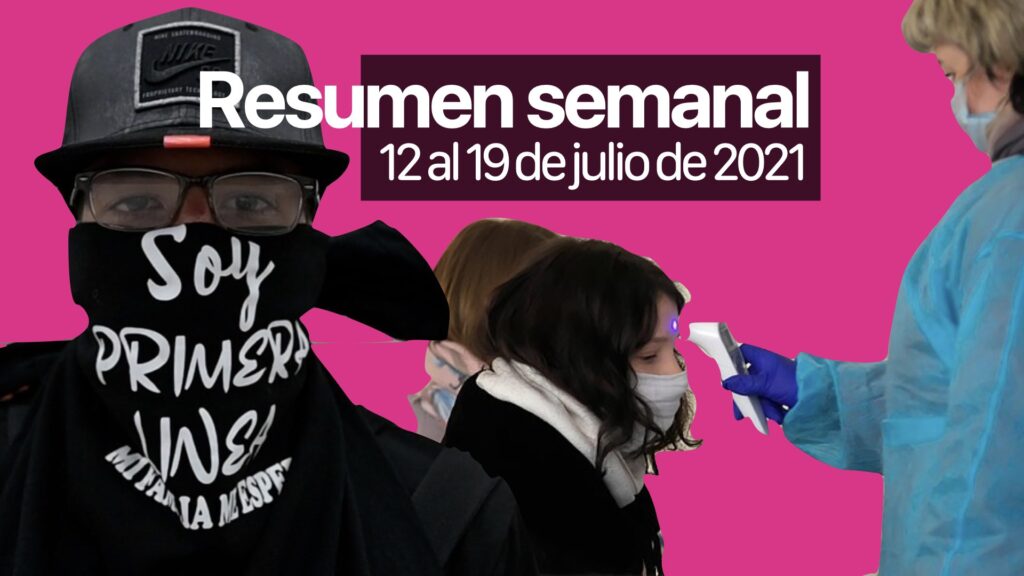
Cristian Carlos. Peninsula 360 Press [P360P].
This week, in different parts of the country, he has called on the population to monitor their well-being due to two important factors: the COVID-19 pandemic, y the dry climate that prevails in the state of California; en "To vaccinate or not to vaccinate? When love is greater than fear".The vaccine is useful, it helps and allows you to move forward," says Elvira Colín, a Mexican immigrant living in Chicago. "Getting vaccinated is for chingones.
On the other hand, also in California, the adverse dry weather and high temperatures give way to new fire seasons. Local authorities called to be prepared for possible fire emergencies in areas of the Bay Area, such as San Mateo County, in the coming days. We invite you to read the recommendations in the note.
And with the increase in active cases of COVID-19 infection in San Mateo County and other parts of the state of California, the use of face masks has been re-imposed in closed places.The new alert, which was released through Peninsula 360 Press, also includes Alameda, Contra Costa, Marin, Marin, San Francisco, Santa Clara, Sonoma and Berkeley counties, is being issued in response to a spike in cases caused by what is believed to be the aggressive Delta variant of SARS-CoV-2, which is affecting both vaccinated and unvaccinated people. Details of the alert, which was released through Peninsula 360 Press, also include Alameda, Contra Costa, Marin, San Francisco, Santa Clara, Sonoma and Berkeley counties.
Gun crimes on the rise in San Francisco: Mid-year crime statistics showed that for the first six months of 2021, gun violence and homicides have increased in San Francisco, rising from 22 in the same period in 2020 to 26 in this first six months, San Francisco Mayor London Breed and Police Chief Bill Scott announced. In that report, the numbers for robbery with violence and assaults are up. And although rape is a crime that deserves all the attention to its victims, it has shown a slight decrease from previous years.
Unfortunately, on 16 July we presented the independent research works of Philip KreycikThis time, accompanied by Gustavo Bernal, who shared with Peninsula 360 Press the search strategy and possible theory of what might have happened to Kreycik the morning of July 10 when he left his home for the Pleasanton Hills on his mountaineering routine. "A group of us folks found ourselves today searching the areas where there is speculation that Philip may have been," Bernal stated. "His parents, his children and his friends want to see him back home."
At Colombia 360a Peninsula 360 Press space dedicated to following the victims of aggressions by armed forces in Colombia during the National Strike, Yor PL said that in the marches there are different lines ready to fight repression. Yor assures that Colombia is living a stage of social repression where the police are hated by many in the community. We invite you, of course, to read the article, or if you prefer, watch the video that is available on our YouTube channel.
In addition, sociologist Manuel Ortiz talks to us in this week's podcast about his trip to Colombia to meet, first hand, the victims of forced disappearances, repression against demonstrators -resulting in facial injuries- and above all, to meet the parents who have suffered the loss of their children by execution at the hands of the public forces -National Police and the Esmad-. In the same sense, the lawyer and coordinator of Primera Línea Jurídica, Rubén Darío, pointed out that the constant state of war in which the Colombian government is involved, gives way to the justification of arbitrary acts against its society. We invite you to listen to the program through Spotify or Apple Podcasts.
To prepare for possible fires in San Mateo
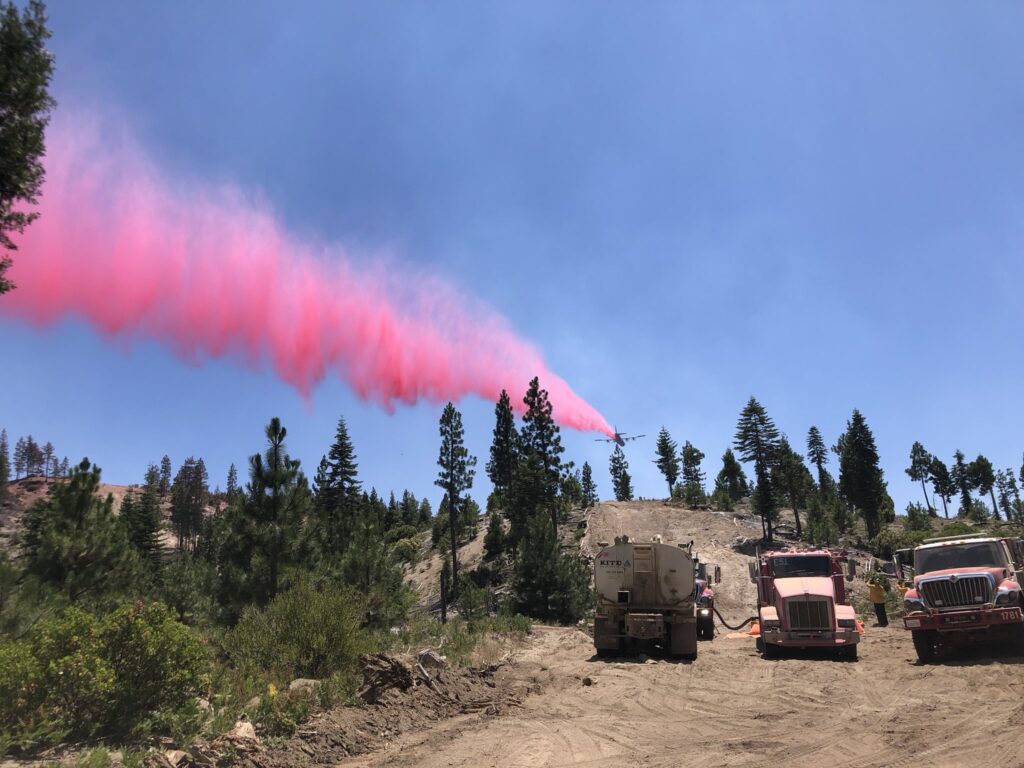
By Pamela Cruz. Peninsula 360 Press [P360P]
Local authorities called to be prepared for possible fire emergencies in the Bay Area, such as San Mateo County, this Sunday and Monday.
The San Mateo County Department of Emergency Management and the Department of Forestry and Fire Protection, better known as CalFire in its San Mateo-Santa Cruz division, and the Sheriff's Office, warned of this after monitoring the weather and drought conditions in the area, a situation that has raised alarms for the authorities themselves.
And that's because the possibility of lightning sparking new wildfires has put the National Weather Service on fire alarm for parts of the Bay Area.
The weather watch covers the North Bay Mountains, East Bay Hills, Diablo Range and Santa Cruz Mountains.
It should be noted that a weather watch is different from a red flag warning. The weather watch comes first and, if conditions become more severe, a red flag warning is issued.
The weather agency said there is a slight, or "minimal" chance of thunderstorms occurring, and "it's not a shock by any means, but the impacts could be large if lightning occurs."
CalFire Deputy Chief Jonathan Cox noted via his Twitter account that the warm, dry weather means a higher risk of wildfires this weekend.
In that regard, he called for assembling an emergency supply kit that remains accessible.
But what should you have in an emergency kit?
CalFire suggests at least one gallon of water per person per day, enough for at least three days.
If you have pets, bring extra food and water; a first aid kit; sanitation items such as garbage bags and wet wipes; a radio to keep you alert and aware of what is happening in the area; canned and long shelf life or non-perishable food; and can openers and basic eating utensils.
In addition, always allocate a supply of medication if someone has a prescription; and last but not least, essential documents and copies either digital or paper and cash. These should be kept in a small bag within easy reach of those responsible for making sure everyone is safe.
Taking the necessary protections and precautions can save lives.
With information from Bay City News
Solidarity
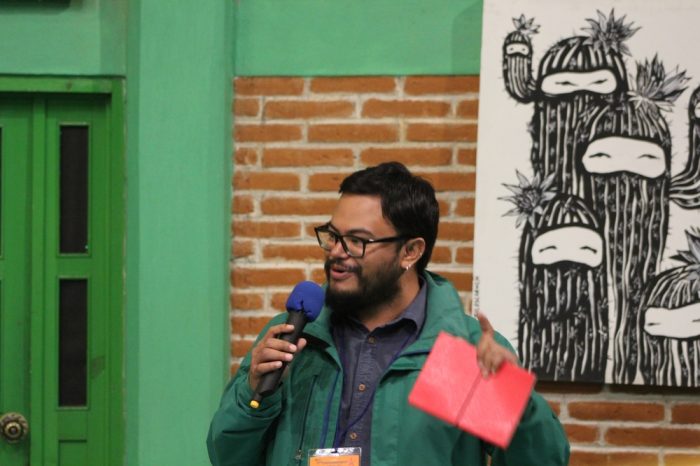
By Raul Romero. Peninsula 360 Press [P360P]
In the 1990s my parents set up a grocery store in a semi-urban neighborhood in what was then Mexico City, now Mexico City. I had to help in various ways in the family business: accompanying my father to the Central de Abastos to stock up, taking inventory or attending to the business in my spare time.
In honor of my grandmother, the store was called "Abarrotes Carmelita". It wasn't a big business, in fact it barely helped to get through the week. I remember that many people came to borrow money, the paycheck wasn't enough and the family had to be fed.
Always supportive, my parents adopted the notebook, a little notebook where several people wrote down the products they asked for: loose diapers, a liter of milk, a kilo of rice, eggs, beans or sugar, oil and even a cigarette "to calm the nerves" were adding to the list of customers who, almost always, came to pay as soon as the fortnight arrived. It is unthinkable that this type of solidarity practices are given today in the Oxxo, Seven Eleven or other companies.
Solidarity practices in the neighborhoods of Mexico City are many. There is the batchfor example, which allows savings and helps those who choose the first numbers to get out of trouble. There is also that of pass the passThe "Transit fare," which allows passengers who have boarded full public transport to make their payment and also to receive their change. Not long ago I learned that it is still alive too. to help pour the castingThe list is long, it would be worthwhile to make an inventory. The list is long, it would be worthwhile to make an inventory.
The social response to the 1985 and 2017 earthquakes in Mexico City hold an important place in the collective memory of Chilean solidarity. The first one I knew more through family stories and literature. The second, I saw and lived it directly: that Tuesday, September 19, 2017, thousands of people of all ages and trades overflowed with solidarity in the City and its surroundings. Many stories of that day are being told and will continue to be told.
The fact is that, far from this selfish individualism that seeks to impose itself as the norm of life, there is in many neighbourhoods of the city a principle of solidarity, of community, of mutual help. I am sure that it will be this being in common that will pull us out of the abyss.
Raúl Romero is a sociologist, Latin Americanist and academic technician at the Institute for Social Research at the University of California, Berkeley, USA. UNAM.
You may be interested in: Another future
Masks Return to San Mateo County

By Pamela Cruz. Peninsula 360 Press [P360P]
After COVID-19 positive cases have increased locally in recent days, and the Delta variant has gained traction because of its high transmissibility, San Mateo County health officials have recommended a return to wearing facemasks indoors.
This recommendation covers all groups of people regardless of their vaccination status.
In that regard, health officials are asking businesses to respect the mandatory and universal use of facemasks when entering their spaces, as well as encouraging employees who are fully vaccinated to wear masks indoors if they are unaware of the vaccination status of those around them.
The Centers for Disease Control and Prevention (CDCThe San Mateo County community has been placed at a "moderate" level of community transmission after the percentage of positivity over the past seven days showed a marginal increase of 0.89 percent compared to the previous week.
However, the increase in hospitalizations for COVID-19 grew 140 percent in that same period, meaning 12 people were admitted due to the virus.
According to the CDC, 70 percent or more of the population eligible for immunization has at least one dose of SARS-CoV-2 vaccine.
It's worth noting that the measure on re-masking indoors is not just in San Mateo County: officials in Alameda, Contra Costa, Marin, San Francisco, Santa Clara, Sonoma and Berkeley counties issued the same "precautionary" advisory, but have yet to issue a new masking mandate for shared indoor spaces such as grocery stores and retailers.
The same health officials recalled that those who are fully vaccinated are highly protected both from contracting the virus, including the currently observed variants, and from becoming seriously ill or dying.
Recently and at a press conference, CDC officials called to maintain health measures such as social distancing, not going to crowded places, wearing masks in enclosed places and constant hand washing.
It is also important that all people who do not yet have their vaccine, go to health centers to get information and access the necessary doses for protection.
Mexican doctor joins search for Philip Kreycik
Christian Carlos. Peninsula 360 Press [P360P].
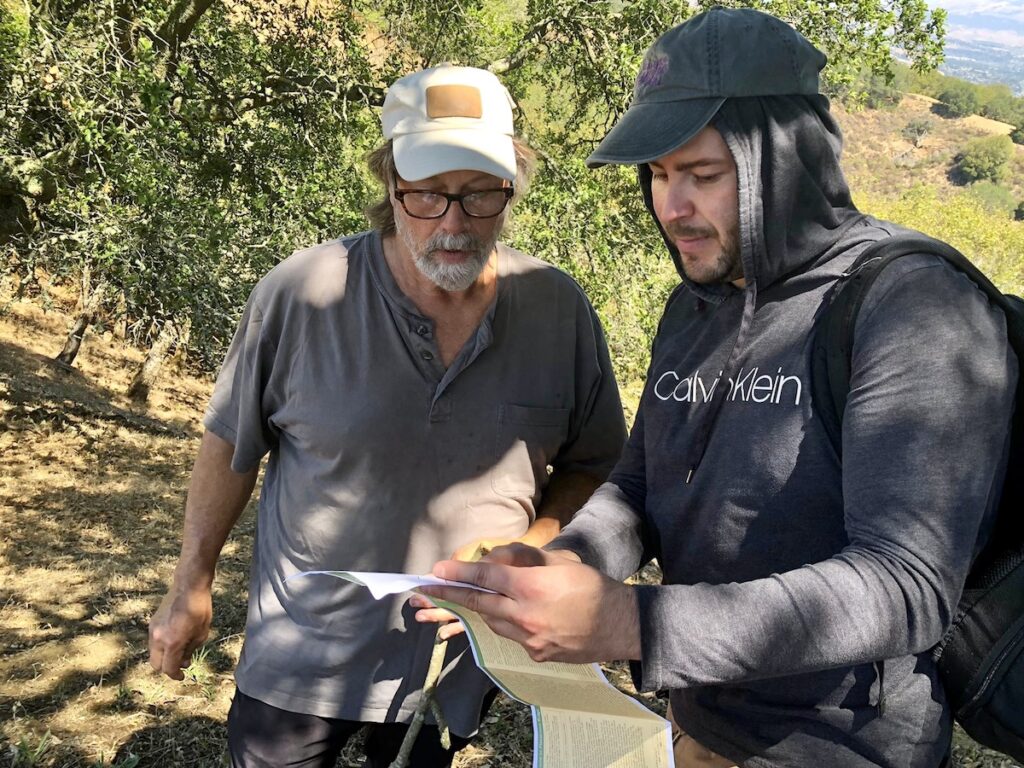
On Saturday, July 10, 37-year-old Philip Kreycik, a resident of Berkley, California, told his wife that he would be heading out that morning to the Pleasanton Hills to complete his mountain climbing routine.
With his disappearance, rescue teams were deployed to the area, off-road vehicles and aerial equipment - including drones - have patrolled the area.
Among them is now Mexican-born doctor Gustavo Bernal, who has experience in emergency and rescue services, who says that the official search for Philip Kreycik lasted only five days, and then the authorities consider him missing indefinitely and cease the search.
"A group of us fellows found ourselves today searching the areas where there is speculation that Philip might be," Bernal stated. "His parents, his children and his friends want to see him back home."
For the past six days, the jogger's whereabouts have been unknown. Philip Kreycik's wife alerted authorities when Kreycik did not return home that evening. "He may be hurt and disoriented."The APB, which authorities subsequently released, asks the public to please check security camera footage as well as their property. To offer any information leading to the whereabouts of Philip Kreycik, please contact with the police at (925) 931-5107.
Doctor Gustavo Bernal is hopeful that the group of volunteers will find Philip Kreycik alive. He said the Pleasanton area, at this time of year, presents an arid environment and "high-risk" mountaineering due to the poisonous wildlife in the area. "If you are going out, take precautions, stay well hydrated and use fluorescent clothing or whistles," Bernal said.
Sudden Spike in COVID-19 Infections Blamed on Unvaccinated: Experts
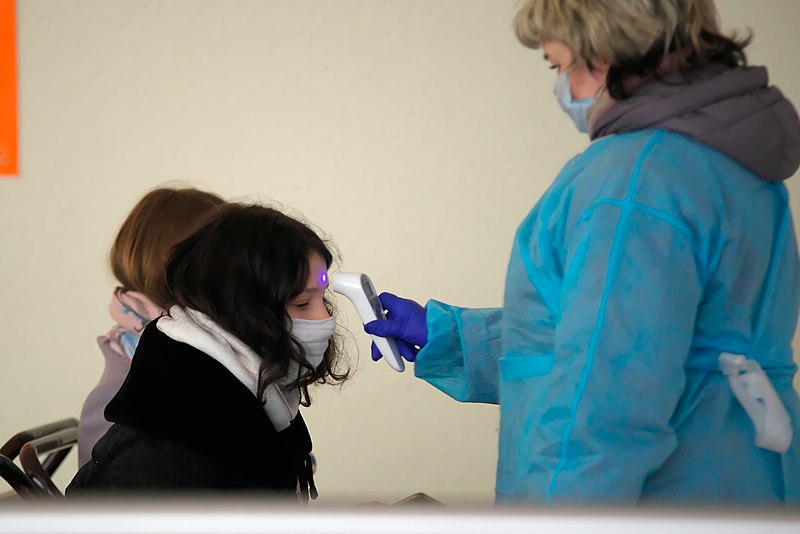
By Pamela Cruz. Peninsula 360 Press [P360P]
After a decrease in COVID-19 positive cases in previous months due to mass vaccination, infections have shown a considerable increase in the last few days, mostly due to people who have not been immunized.
The situation could result in an increase in hospitalizations and possible deaths, which may well have been preventable.
So said experts from the Centers for Disease Control and Prevention (CDC), who in a session with the media organized by Ethnic Media Services, agreed that if this situation continues, the pandemic could again spiral out of control.
And is that yesterday, July 15, 33 thousand new cases of COVID-19 were detected, while the average in the last seven days is around 26 300 cases, representing an increase in the number of infections of almost 70 percent of the average compared to the previous week.
The arc of inpatient admissions is about 2,790 per day, an increase of 36 percent from the previous seven-day period. This represents an increase of 26 percent per day with 211 cases per day.
"It's clear to many of us that this is becoming a pandemic of unvaccinated people, who are responsible for most of the new infections and hospitalizations," detailed Dr. Jose T. Montero, director of the CDC's State, Tribal, Local and Territorial Support Center.
The expert detailed that people who are not vaccinated account for the majority of new infections, hospitalizations and deaths. "I have seen outbreaks of cases in different parts of the country, especially in those places with low vaccination coverage because unvaccinated people are at risk, while communities that are fully vaccinated are doing much better," he said.
He recalled that while it is true that in January the country had an average of 200,000 daily cases, and the 33,000 yesterday did not reach that high figure, there is a significant increase in COVID-19 infections week after week, as in the last 7 days there was an increase of 70 percent.
"It's pretty clear that this pandemic is not over. The good news is that if you are vaccinated you have good protection against COVID-19 and possible hospitalization, and you are protected against the variants that are circulating in the country today," he stressed.
In that sense, Dr. Montero recalled that the Delta variant has increased transmissibility, which basically means that the virus can spread easily between people.
That strain is estimated to be the most prevalent variant in the United States, accounting for more than 57 percent of the samples sequenced nationwide, compared with only 26 percent in mid-June.
Montero said the data suggest that the Food and Drug Administration-licensed vaccines being administered in the country - Pfizer, Moderna and J&J - protect against the Delta variant and others.
Infection curve is changing
In this regard, epidemiologist Lauri Hicks, from the Division of Healthcare Quality Promotion at the CDC's National Center for Emerging and Zoonotic Infectious Diseases, explained that the country is experiencing a process of change in the decrease of cases.
"We are in a process of change. We are seeing an increase in COVID-19 infections in areas where people are not vaccinated," he said.
In this regard, he reiterated the importance of get fully vaccinatedAccording to CDC data, there is an extraordinarily high rate of protection for people who have been fully immunized with the Pfizer or Moderna vaccines that require two doses, even better than other vaccines that also require more than one dose, such as those for hepatitis or varicella.
"I want to reiterate that the Pfizer and Moderna vaccines are most effective when given in two doses in a series. Both vaccines provide effective protection after two weeks from the second dose with each vaccine 90 percent effective against COVID-19, including severe infections."
"Not completing the series again puts people at risk of disease, including the highly contagious Delta variant. We know that getting vaccinated three to four weeks after the first vaccination can be difficult, but after noticing an increase in variants we want to encourage people to get vaccinated on time," he stressed.
In this sense, the specialist stressed that you should not restart the series if you receive the second dose late, even if it is after the recommended three or four weeks.
On the other hand, the immunologist said that certain communities, regardless of geography, are also experiencing lower vaccination rates, coupled with those of greater vulnerability, where gender, age of the population, education, social and economic status, and access to health care are involved.
Thus, adolescents represent the most effective strategy to prevent infection and control the pandemic, so they encouraged this sector to be vaccinated as soon as possible, because in addition to being at risk of infection, they put their family, loved ones and community at risk.
Trust, the key in the great challenge of vaccination for all
It is important to note that reaching all unvaccinated people is a major challenge, as there are a number of factors and barriers for some communities, where trust in vaccines is key.
"We're really working on increasing confidence in vaccines. We know that providers are the most trusted source of information, so we want to make sure they have the information and can inform and educate patients," Hicks said.
He stressed that the CDC is working with a number of different medical, community, clinical and faith-based organizations to reach the most vulnerable and under-vaccinated communities, including support for the National Resource Center for Refugees, Immigrants and Migrants.
Back to masking?
Experts agreed that declines in the number of people getting vaccinated are once again leading to places where immunization has been advanced to have to use masks again.
However, they stressed that preventive measures have not gone away, and that on the contrary, should be maintained, such is the case of the use of masks, avoiding crowded or closed places, social distancing, and hand washing.
So far, 336 million 604 thousand 158 doses of one of the vaccines approved by the country have been administered in the country. Thus, 185 million 424,899 people have at least one dose of the inoculation, while 160 million 686,378 people are fully immunized, which means only 48.4 percent of the eligible population. There is a long way to go to see the light at the end of the tunnel for this pandemic and getting vaccinated is the way to attack it.
You may be interested in: To vaccinate or not to vaccinate? When love is greater than fear
State investment of $26.5M to new arts center in SF's Chinatown

By Pamela Cruz. Peninsula 360 Press / Bay City News
Assemblyman Phil Ting, D-San Francisco, announced Thursday $26.5 million in state funding for a new arts and media center in Chinatown.
Ting, chairman of the Assembly Budget Committee, announced that the new arts center, which will be called the Edge on the Squarewill be a destination for visitors and tourists to learn about Asian and Pacific Islanders in the arts, education, social change and technology sectors.
The new arts center in Chinatown will be located at 800 Grant Avenue, one block from the iconic Portsmouth Square. The center will feature exhibitions, performances and presentations, according to Ting.
"The alarming increase in hate incidents against members of the AAPI community tells us that we must invest in ways to educate people by promoting this sector's many contributions to the fabric of California and this country. Edge on the Square will be a place to learn and open minds, while providing our AAPI community with a safe space to be seen and heard," Ting said in a statement.
Assemblyman David Chiu, D-San Francisco, applauded the measure.
"As the oldest Chinatown in the United States, San Francisco's Chinatown has been the social and cultural capital of our Chinese community," Chiu said. "After years of discussion, I'm thrilled that Edge on the Square I'm going forward to make Chinatown come back stronger after the pandemic, the recession and the anti-Asian hate.
The Assemblyman detailed that this project will celebrate equity, inclusion and social justice, while ensuring that Chinatown will be a beacon for generations to come.
The new funding will allow Chinatown Media and Arts Collaborative, a partnership of several local organizations including the Chinese Historical Society and the Chinese Cultural Center, to purchase the site and oversee the development of the project.
«Edge on the Square will be a new icon for the city and a strong Asian-American voice that is inclusive and transformative," said project leader Mabel Teng.
The new centre is expected to open in 2024.
You may be interested in: San Francisco Airport to Offer Free COVID-19 Vaccination

